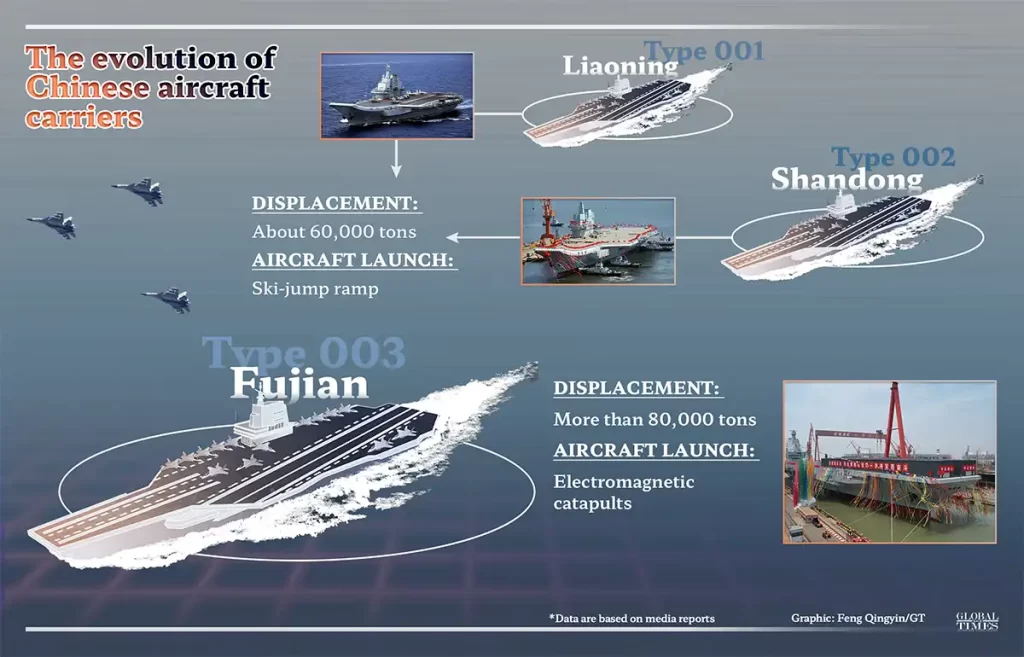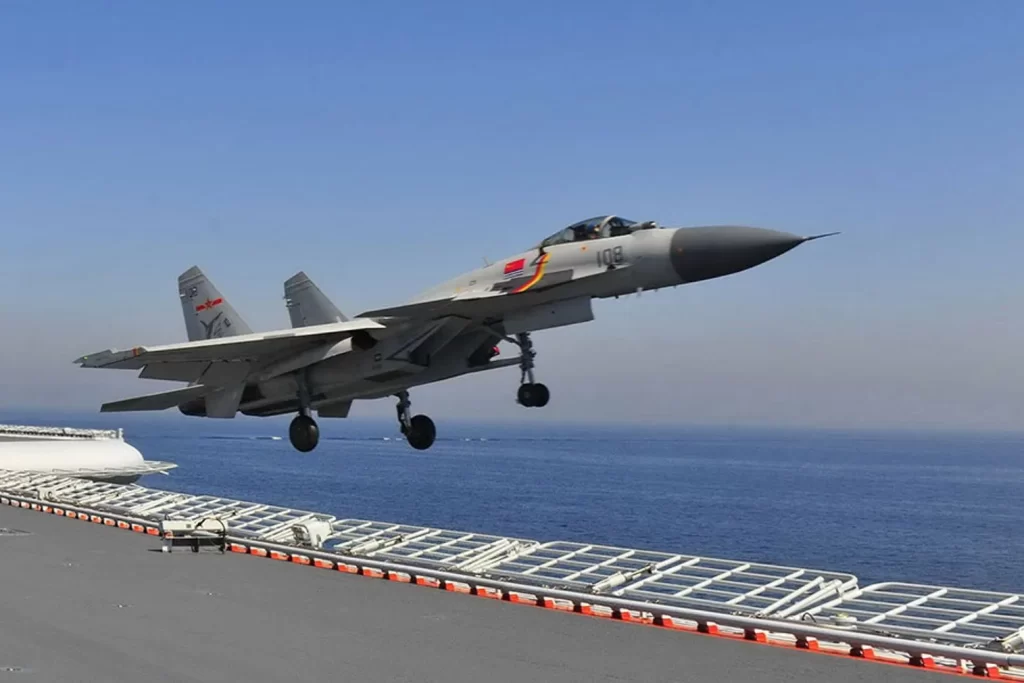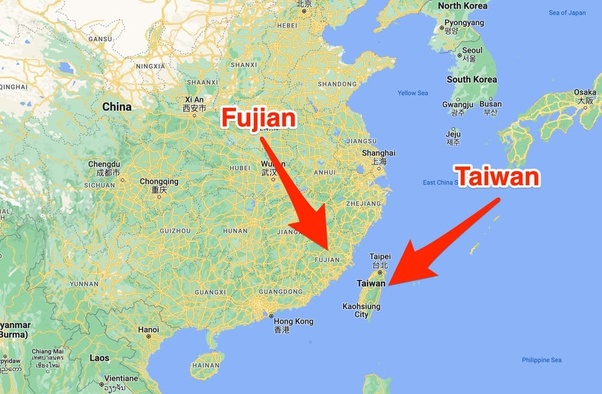Estimated reading time: 8 minutes
Table of contents
Hi friends! Have you noticed that there are a lot of toys related to Chinese Fujian Aircraft Carrier? A significant portion of them are building blocks!
However, it seems that many new friends are still not very familiar with the Chinese Fujian Aircraft Carrier. So, in this article, I will introduce you about Chinese Fujian Aircraft Carrier and answer many questions you might have about it.
More importantly, I will showcase many review roundup posts that I have written about toys, LEGO bricks, and some LEGO alternatives related to Chinese Fujian Aircraft Carrier. These articles provide very detailed descriptions and images of the toys, and I will also recommend posts from friends who have reviewed these toys! Of course, I will also suggest many interesting toys related to Chinese Fujian Aircraft Carrier besides the review posts.
Without further ado, let’s get started!
Review Roundup Posts
Chinese Fujian Aircraft Carrier Introduction
The CNS Fujian, also known as the Type 003 aircraft carrier, is a testament to China’s advancing military technology and naval capabilities. Here’s a more detailed overview of this impressive vessel:
Cost
The construction cost of the Fujian aircraft carrier (CNS Fujian) has not been officially disclosed by Chinese authorities. However, based on estimates and comparisons with similar projects, the cost is likely to be in the billions of dollars.
- Scale and Technological Complexity: The Fujian is China’s most advanced aircraft carrier, featuring cutting-edge technologies like the Electromagnetic Aircraft Launch System (EMALS). The complexity and high development costs of such technologies significantly increase the overall construction cost.
- Comparison with Other Carriers: The Fujian has a displacement of over 80,000 tons and is comparable in size and technology to the U.S. Navy’s Gerald R. Ford-class carriers. The construction cost of a Ford-class carrier is approximately $13 billion, suggesting that the Fujian’s cost could be in a similar range.
- Strategic and R&D Investments: Building the Fujian involves not only the cost of the hull and equipment but also extensive research and development expenses and testing costs, all of which contribute to the overall investment.
Although the exact figure is difficult to pinpoint, it is clear that the Fujian represents a significant financial commitment by China in its efforts to modernize and advance its naval capabilities.
Construction and Development

Timeline:
- Initial Construction: The Fujian’s construction began at Shanghai’s Jiangnan Shipyard in 2017.
- Launch: The carrier was launched on June 17, 2022, after five years of construction, a milestone celebrated with significant media attention in China.
- Sea Trials: Fujian began its first sea trials in May 2024. These trials are crucial for testing the carrier’s propulsion and power systems. By July 2024, it had already undergone multiple sea trials to ensure all systems are functional and to identify any necessary adjustments.
Design and Specifications
Size and Dimensions:
- Displacement: Approximately 80,000 tonnes when fully loaded, making it significantly larger than its predecessors, the Liaoning and Shandong.
- Length and Beam: The Fujian measures about 316 meters in length with a flight deck beam of 72 meters, expanding to 76 meters at its widest point. The hull beam at the waterline level is around 39 meters.
Launch System:
- CATOBAR System: The Fujian is equipped with a Catapult Assisted Take-Off But Arrested Recovery (CATOBAR) system, a significant advancement over the Short Take-Off Barrier Arrested Recovery (STOBAR) systems used on previous Chinese carriers. The CATOBAR system, powered by an electromagnetic system, enables the launch of larger and heavier aircraft, enhancing the carrier’s operational flexibility.
Propulsion:
- Conventional Steam Turbine: Unlike U.S. carriers which are nuclear-powered, the Fujian uses a conventional steam turbine propulsion system. This choice reflects a more conservative approach, though it still represents a step forward in capability.
Technological Advancements

Electromagnetic Catapults:
- Advanced Launch System: The electromagnetic catapult system on the Fujian is similar to that used on the U.S. Navy’s Gerald R. Ford-class carriers, marking a significant technological leap for the PLAN. This system allows for more efficient and powerful launches compared to traditional steam catapults.
Radar and Defense Systems:
- AESA Radar: The Fujian is equipped with advanced Active Electronically Scanned Array (AESA) radar systems, enhancing its detection and tracking capabilities. The carrier also features several other radar and electronic warfare systems housed within the island structure.
- Defensive Armament: The ship’s defenses include HQ-10 short-range surface-to-air missile systems and H/PJ-11 30 mm autocannons. These systems are designed to protect the carrier from aerial and surface threats.
Air Wing and Aircraft

Aircraft Capacity:
- Types of Aircraft: The Fujian is expected to carry a variety of aircraft, including the J-15B fighter jets, the next-generation J-35 stealth fighters, and the KJ-600 airborne early warning and control (AEW&C) aircraft. The carrier will also likely include electronic warfare variants like the J-15D, and helicopters such as the Z-8/18 and Z-20 families.
- Operational Flexibility: The CATOBAR system allows the Fujian to launch these aircraft more effectively, providing greater operational flexibility and capability than its predecessors.
Strategic Significance

Regional Impact:
- Geopolitical Symbolism: Named after the Fujian province, which is located directly opposite Taiwan, the carrier’s presence carries significant geopolitical symbolism. It underscores China’s military ambitions and its intent to project power in the region.
- Operational Role: Once fully operational, the Fujian will enhance the PLAN’s blue-water capabilities, allowing China to project power further afield and maintain a more robust presence in key strategic areas, such as the South China Sea and beyond.
Future Prospects
Commissioning and Deployment:
- Full Operational Capability: The Fujian is expected to be fully operational within the next few years. The ongoing sea trials are critical in ensuring all systems function correctly and that the carrier can meet the operational demands placed upon it.
- Continued Development: As the PLAN continues to refine and expand its capabilities, the Fujian will play a pivotal role in China’s naval strategy, potentially leading to further advancements and the development of even more sophisticated vessels in the future.
Strategic Implications
The Fujian’s development is a clear indicator of China’s intent to expand its naval capabilities, potentially shifting the balance of power in the Indo-Pacific region. The carrier’s advanced systems and anticipated commissioning by 2025 or 2026 will enable the PLAN to conduct more sustained and versatile operations, furthering China’s ability to project power far beyond its shores.
As the Fujian continues its sea trials, it is expected that more complex tests, including full-scale flight operations, will be conducted. This process will be crucial for the carrier to achieve full operational capability and integrate into China’s carrier strike groups.
The completion and deployment of the Fujian will undoubtedly enhance China’s maritime power and strategic reach, making it a key asset in the PLAN’s evolving naval strategy.
The CNS Fujian represents a significant leap in China’s naval capabilities, reflecting the nation’s growing military prowess and its strategic ambitions on the global stage.
FAQs
No, the Fujian is not nuclear-powered. It uses conventional steam turbines.
Yes, the Fujian is considered a supercarrier due to its large size and advanced capabilities.
The Fujian can carry around 50 aircraft, including fixed-wing aircraft and helicopters.
The Fujian can reach speeds of up to 30 knots (approximately 56 km/h or 35 mph).
The Fujian is a more advanced carrier compared to the Indian Navy’s INS Vikrant. The Fujian is larger, features more advanced catapult-assisted take-off but arrested recovery (CATOBAR) systems, and has a greater aircraft capacity. The Vikrant, on the other hand, uses a ski-jump for aircraft takeoff and is smaller in size and capacity.
The exact cost is not publicly disclosed, but estimates suggest it could be in the range of $4 to $5 billion USD.
The Fujian is considered a game changer because it represents a significant leap in China’s naval capabilities. It features advanced electromagnetic catapults for launching aircraft, which is a technology only the United States has deployed on its carriers. This enhances the operational efficiency and combat capability of the carrier.
The Fujian has completed its initial sea trials, but details on the specific 8-day sea trial completion are not confirmed publicly. It is undergoing a series of tests and trials as part of its commissioning process.
The Fujian is considered to be a highly advanced carrier with state-of-the-art technology, comparable to the latest U.S. carriers. Its advanced systems, large capacity, and modern design make it a significant addition to China’s naval power.
The Fujian is a symbol of the modernization of the Chinese Navy, advanced but still behind the U.S. Ford in terms of nuclear power and overall technological level.
The Fujian symbolizes China’s naval modernization but still lags behind the Nimitz-class carriers in nuclear propulsion and proven operational capability.
So, after reading my article, I believe you all have a basic understanding of the Chinese Fujian Aircraft Carrier. What do you think about it? Besides that, I’m also very curious to know your thoughts on the toys and reviews I recommended. If you want to learn more, feel free to leave a comment below and let me know!






